Collecting Rainwater For The Garden: A Step-by-Step Guide
Collecting and saving rainwater for use in the garden just makes sense, and was a common practice by our ancestors. See how it's done, and start saving money on your water bill.
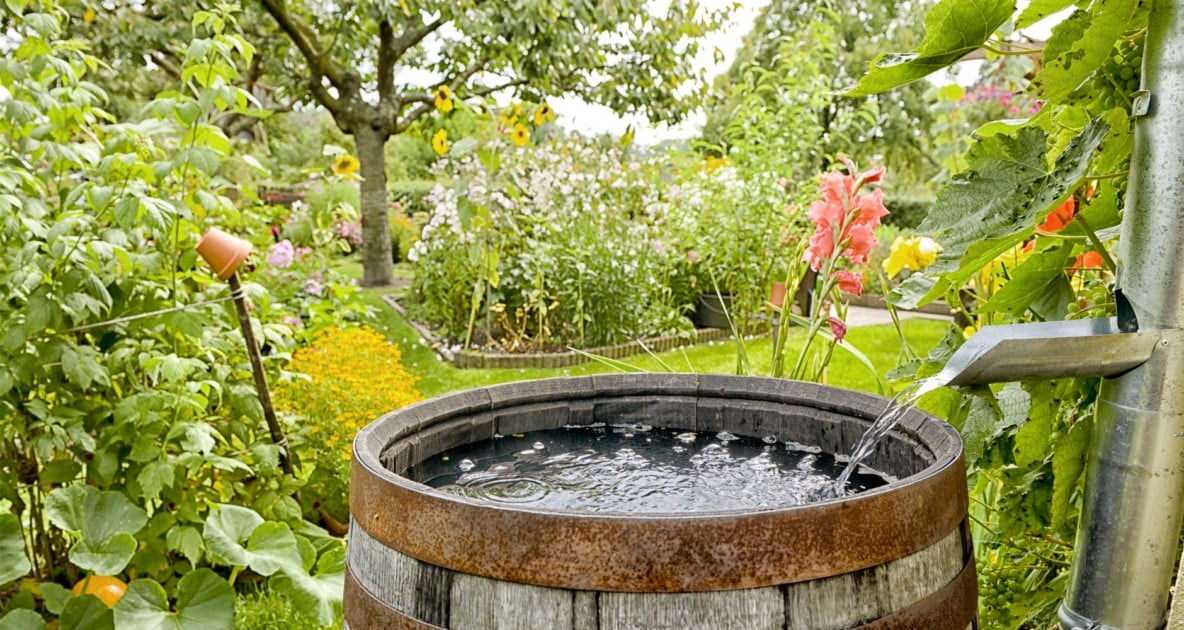
The patter of rain on the roof can make a gardener’s day. Not only is nature watering the plants, but it’s providing hydration for later use. Collecting and saving rainwater for use in the garden just makes good sense, and was a common practice by our ancestors. It conserves water, saves money, and utilizes the resource that Mother Nature provides. The best part is, you won’t have to decide between a thriving garden and a high water bill if you’re faced with a hot, dry summer, or drought.
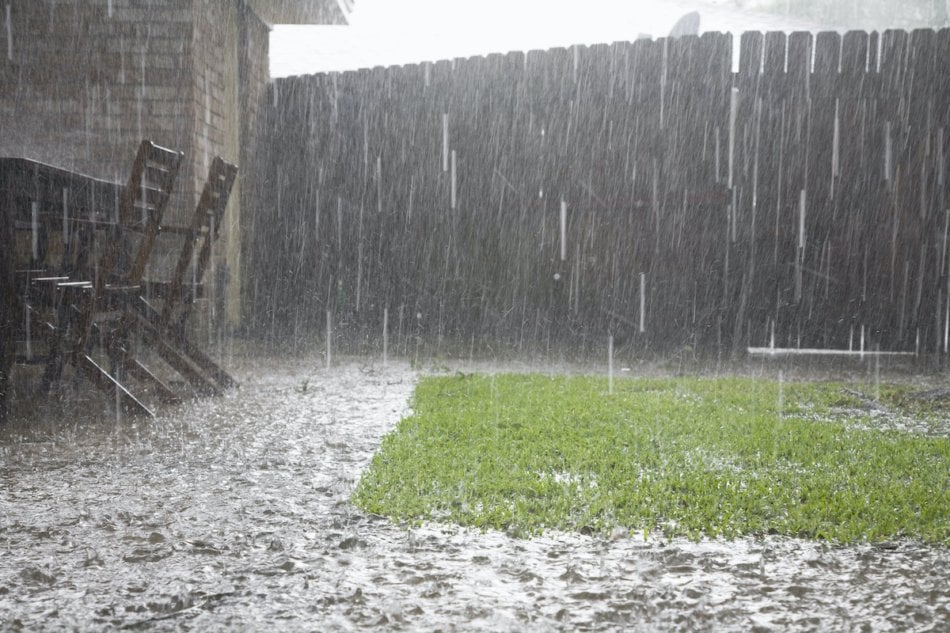
Why collect rainwater? The water that comes out of your tap often is treated with chemicals salts, minerals, and chlorine in order for it to be safe to drink. Unfortunately, these chemicals are not always good for your plants and the soil. Rainwater falls naturally soft, meaning it contains fewer concentrations of dissolved minerals like magnesium and calcium.
Rainwater Collection Methods
Collecting rainwater can be as simple as a downspout flowing into a barrel outfitted with a spigot, or it can be as elaborate as a series of pipes connected to a tank or cistern hooked to a pump for redistribution.
The most common method to collect rainwater is off a roof. If gutters are installed and a downspout is available, the next step is getting a barrel. New or contaminant-free 55-gallon drums are available and can be converted into a rain barrel, while most garden supply centers often have ready-made barrels equipped with screens and covers to filter debris and keep out insects and animals. A spigot should be installed near the base. If the spigot can’t be attached to a garden hose, then the barrel should be elevated enough to slide a watering can underneath for ease of filling. The stand should be built to support the weight of a full barrel (a gallon of water weighs about 8.3 pounds).
If one rain barrel isn’t enough to meet demand, multiple barrels can be connected to each other by joining them with pipe near the top; once the first barrel fills, the overflow feeds into the next barrel. Commercially made barrels often have kits available to link multiple units. This method works well if only one downspout is available. Otherwise, each downspout could be matched with a barrel or connected barrels.
To estimate potential rainwater runoff, multiply the square footage of the catchment area, or roof surface, by the amount of rain in inches by the volume in gallons, which equals 0.62. For example, a roof that is 30 feet long and 10 feet wide is 300 square feet. How much rain can be collected if an inch of rain falls? Multiply 300 x 1 x 0.62. It equals 186 gallons.
Cautions
Keep in mind while rainwater can be used directly in the garden, it is not drinkable (potable) water.
While rainwater can be used directly in the garden, it is not potable water. Texas A&M AgriLife Extension offers an in-depth look at use of rainwater beyond the garden plot, including the types of contaminants common in roof runoff and how to treat rainwater for non-garden use.
Additionally, be sure to keep the barrels covered when possible to keep out children, pets, and small wildlife.
Rainwater Collection – Illegal?
One other caution might be a surprise. Check your local ordinances to see if it is legal to collect rainwater or if there are laws that must be followed. An online search of the question “Is it illegal to collect rainwater in (your state)?” can help you determine if you should seek further information for your place of residence.
Storage
If water might freeze in the off-season, empty the barrels and store them where they won’t be hit by snow and ice sliding off the roof. Heavy-duty plastic barrels can crack in extreme conditions. Keep them in a garage or shed.

Janine Pineo
Janine Pineo has been gardening all her life in Maine and writing about it for more than two decades. More of her writing can be found on her website, GardenMaine.com.

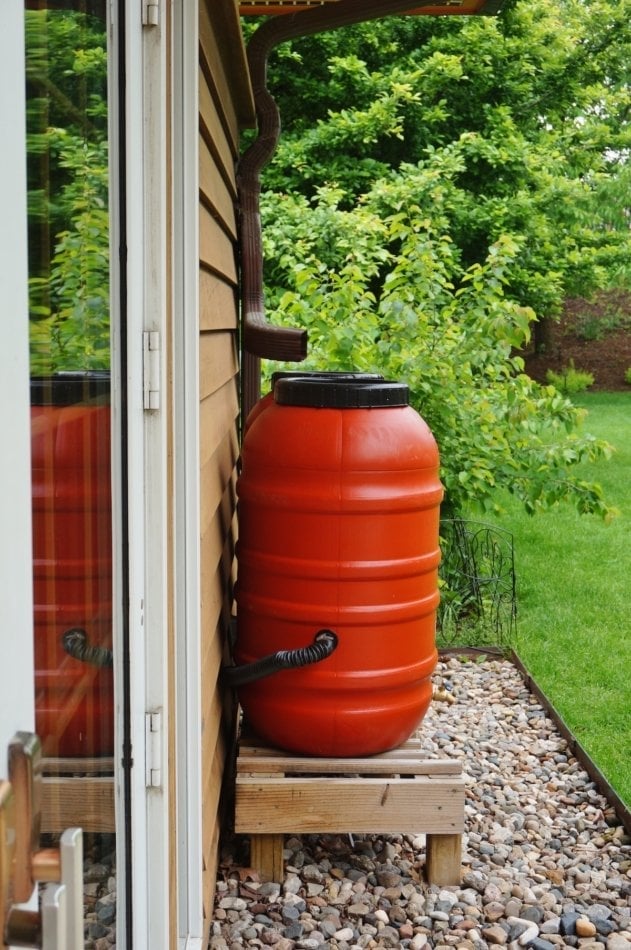
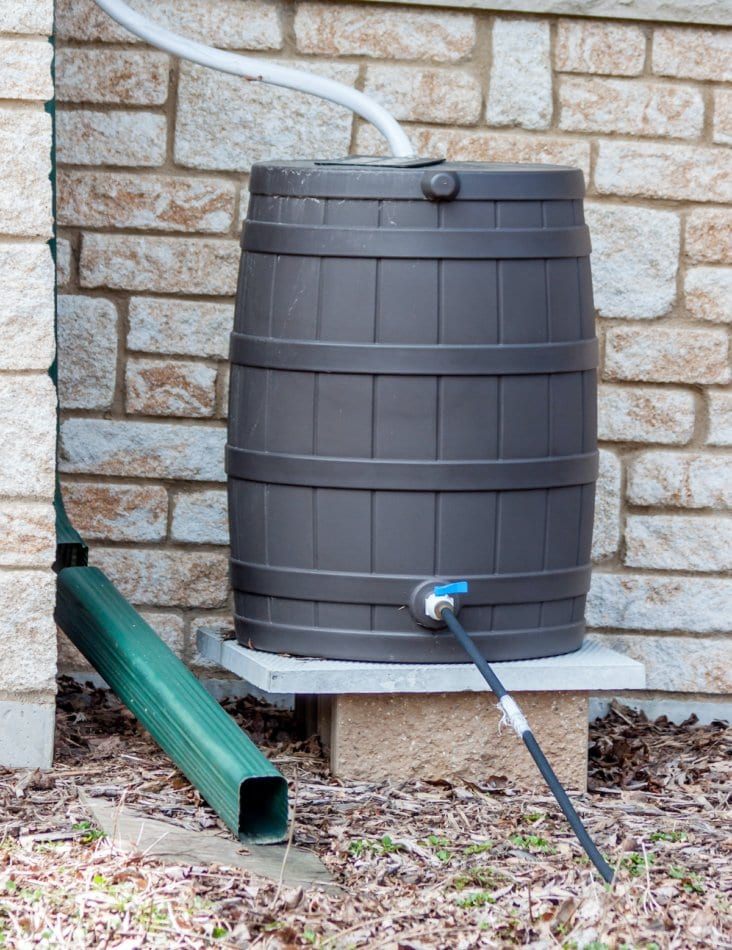
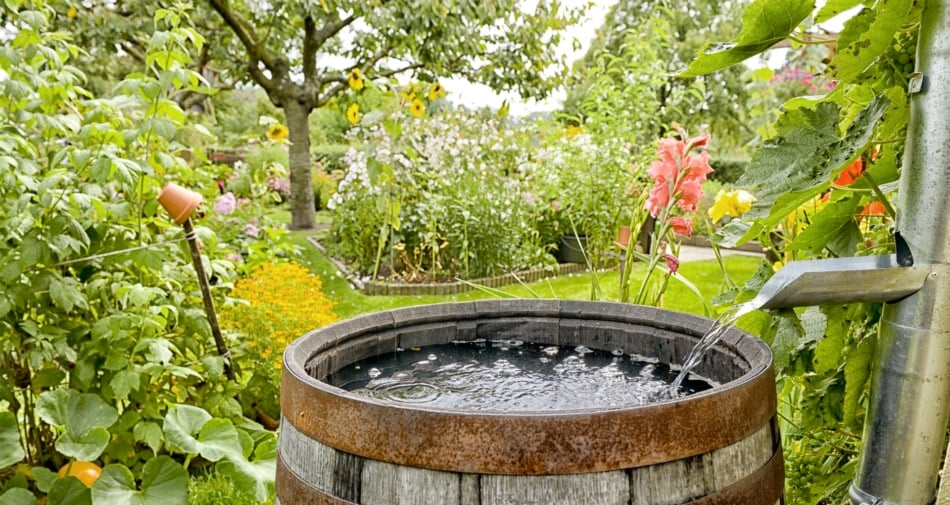
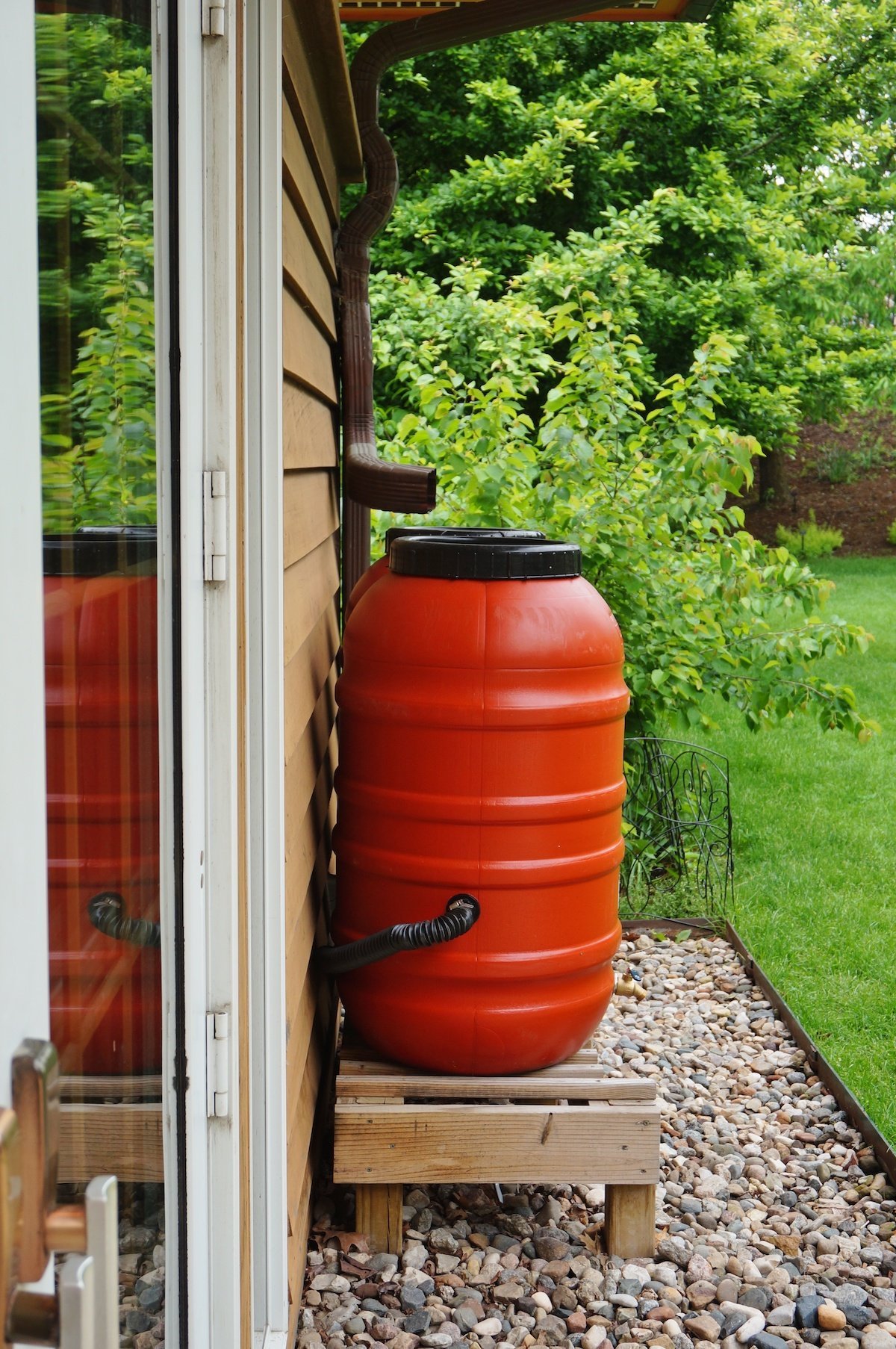
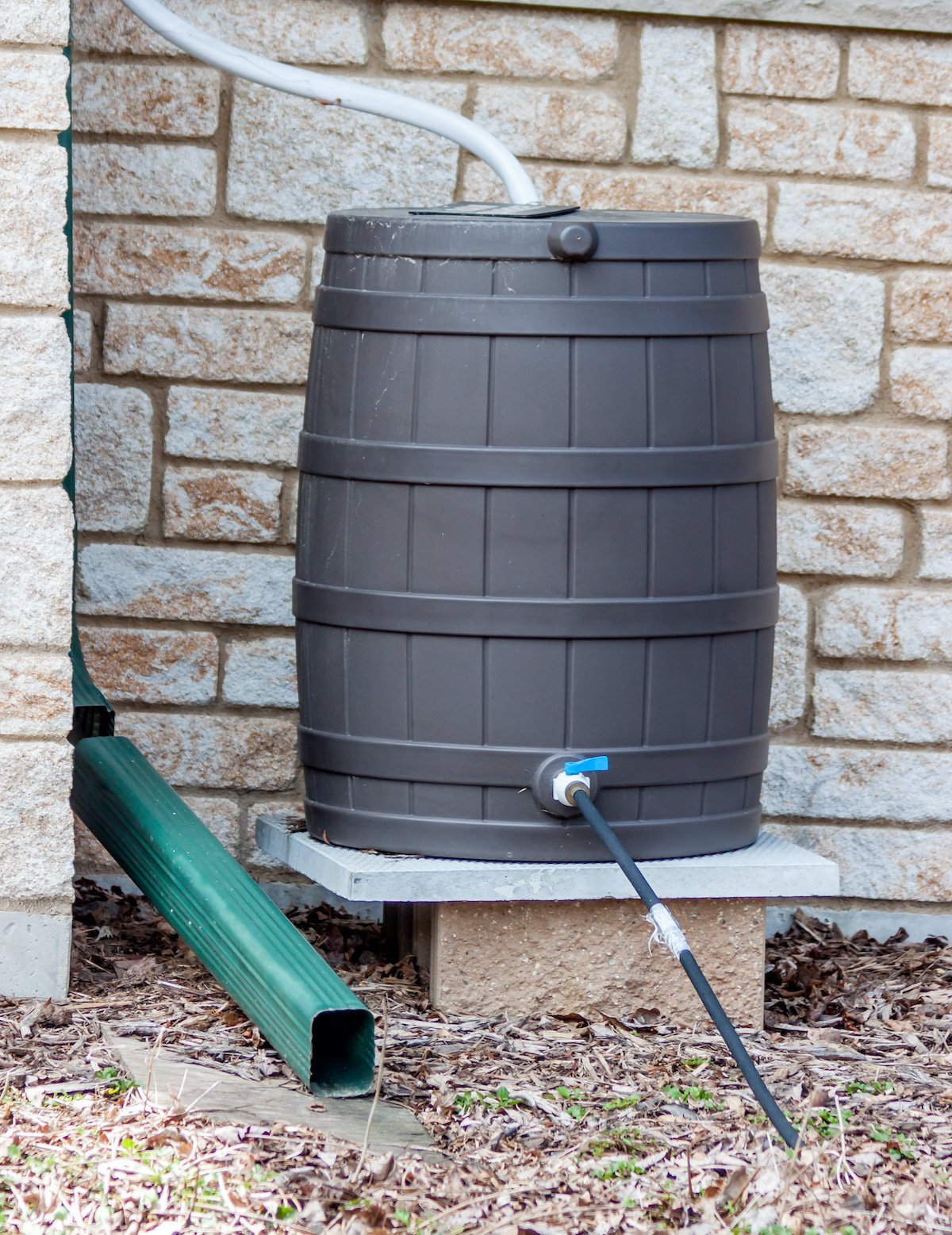
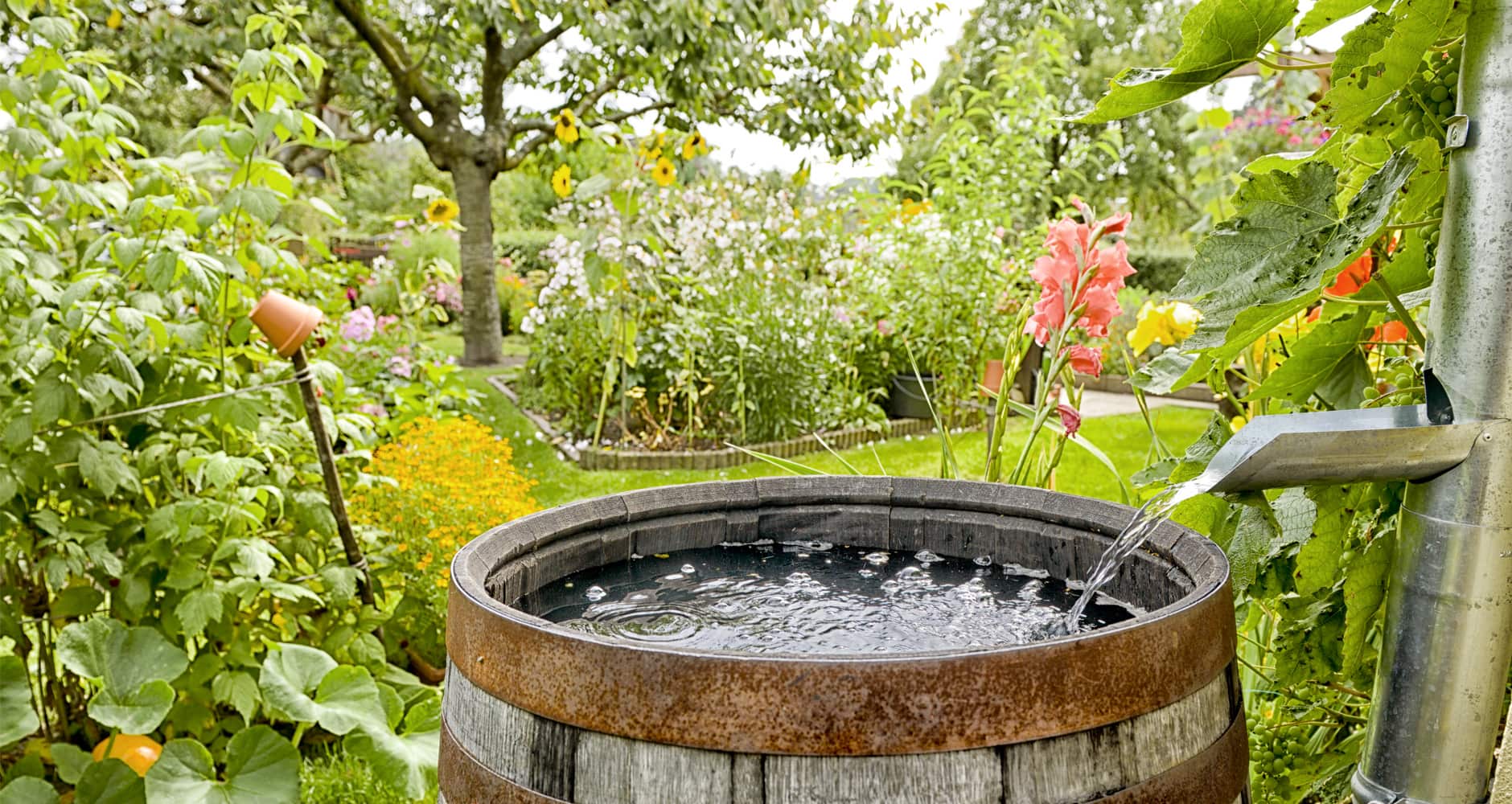

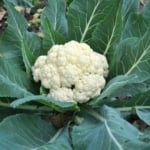
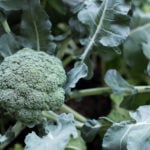

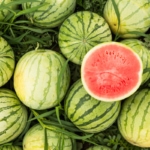
you will also grow a large quantity of mosquito’s even if you seal the barrel. been there done that.
Can be easily cleared of mosquito larvae…buy something garden style NEEM leaves crushed leaves or powder form. Sprinkle a pinch over the top of the water ….. not a lot …try just a pinch over the top of the water first.. All larvae should be be dead next day. If more seem to be coming up,,put another healthy pinch in on the top of the water. It will filtrate to the bottom while killing the larvae or bugs. Best news to that is they NEEM isn’t poisonous usually to mankind nor beast. And it’s good for the garden too…won’t hurt most plants. I’ve read to be more cautious with NEEM oil sprays on plants tho. Do a search engine full explanation about NEEM before you use any. But it shouldn’t hurt anyone or anything but bug pests. And possibly other insects that are considered beneficial..so it needs user to be. To read up on it first to decided to use it and what bugs it does affect….because your collected water will bear its essence …I definitely. .
Correct
How do the larvae get in the barrel if it’s sealed. ? I understand how , if it’s not completely sealed. Or even has close knit screen over the openings? ?